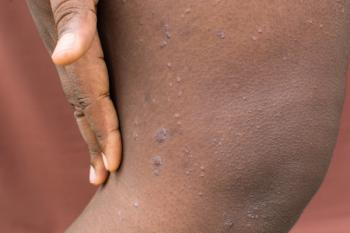
Complementary Therapies Improve Quality of Life in PH
Initial evidence suggests alternative approaches such as exercise, dietary modification, and psychosocial therapies may enhance traditional management of pulmonary hypertension.
Adding on nonpharmacological treatments to therapy appeared to enhance pharmacological management of pulmonary hypertension (PH), according to a systematic review and meta-analysis
Pulmonary hypertension is a progressive, life-threatening disorder in which narrowing of the pulmonary arteries causes the heart to work harder and gradually weaken. The World Health Organization recognizes 5 distinct groups of PH, characterized by etiology or comorbidity.2
Common
According to the authors, drugs can be effective at controlling PH symptoms, but they do not halt disease progression. In addition, “these drugs often come with side effects, complex administration, high costs, and lack of efficacy in completely reversing disease progression,” they wrote.
“Given these limitations, there is increasing interest in non-pharmacological interventions that might offer additional benefits or serve as alternatives to traditional treatments,” they added.
In this study, the authors wanted to explore the effects of integrating complementary therapies with conventional PH treatment. Additionally, they wondered about the mechanisms through which these therapies might achieve these effects. They also sought to assess the reliability of previous research.
Primary outcomes of this study included pulmonary arterial pressure, exercise capacity, quality of life, and mortality. Hospitalization rates and adverse effects were also assessed.
The authors began by searching PubMed, EMBASE, Cochrane Library, Web of Science, and Scopus. To be eligible, studies had to clearly differentiate between intervention types, particularly in cases when combined modalities were used. This highlighted potential differences in efficacy and determined if a combination of therapies provided additional benefits.
The meta-analysis included 15 randomized controlled trials, 10 cohort studies, and 5 case-control studies published between 2015 and 2024. The study population totaled 2000 patients aged 18 and older diagnosed with any form of PH. Identifying participation from each PH subgroup was critical in interpreting the efficacy of the interventions, the authors explained, as patients with varying PH etiologies may exhibit a different response to exercise and dietary interventions.
In total, the investigators assessed 12 structured exercise programs, 8 dietary interventions, and 10 psychosocial therapies, some studies utilizing a combination of modalities.
Key study findings showed:
- Exercise: increased exercise capacity as measured by the 6-minute walk distance (6MWD) with a mean increase of 45 meters (95% CI: 30-60 meters, P < .001). Participants in a structured exercise program also reported enhanced quality of life. Furthermore, patients participating in a structured exercise program showed an average increase of 0.8 L/min in cardiac output. The mechanisms thought to underlie these improvements included increased cardiac output, improved oxygen delivery to the tissues, better endothelial function, and greater skeletal muscle efficiency.
- Dietary changes: reduced mean pulmonary arterial pressure (mPAP) by an average of 4 mmHg (95% CI: 2 to 6 mmHg, P < .01).
- Psychosocial support: significantly improved quality of life scores with a standardized mean difference of 0.45 (95% CI: 0.30 to 0.60, P < .001) on the Minnesota Living with Heart Failure Questionnaire. Notably, psychosocial therapies also reduced anxiety and depression.
The authors emphasized that combining modalities enhanced treatment efficacy. In one example, they noted that exercise combined with psychosocial therapy resulted in an increase in 6MWD to 60 meters compared with an increase of 45 meters for exercise alone.
They also pointed out that longer durations of therapies were associated with greater improvements.
With regards to secondary outcomes, analysis revealed a 20% reduction in hospitalization rates due to heart failure exacerbations (95% CI: 10% to 30%, P < .001). Also, only minor adverse events were reported.
Overall, these findings suggest that complementary therapies significantly improved clinical and functional outcomes. They were generally well tolerated, further supporting their use in PH care. Yet despite these promising findings, the study had limitations.
The authors said, for instance, that differing types of interventions and varying subgroups across the included studies make it difficult to generalize their results to a broader PH population. Furthermore, the data identified variable risks of bias, a factor shown to influence the reliability of findings in previous meta-analyses.
Still, the authors believe their study illustrates the potential of alternative therapies to complement traditional treatment of PH.
“However, the effectiveness and safety of these interventions need further exploration, particularly in comprehensive clinical settings,” they concluded.
References
1. Albulushi A, De Silva TD, Kashoub M, et al. Expanding horizons in pulmonary hypertension management: A systematic review and meta-analysis of non-pharmacological interventions. Published online September 1, 2024. Current Problems in Cardiology. doi.org/10.1016/j.cpcardiol.2024.102825
2. Types of Pulmonary Hypertension: the WHO groups. The Pulmonary Hypertension Association. Accessed September 18, 2024.
Newsletter
Stay ahead of policy, cost, and value—subscribe to AJMC for expert insights at the intersection of clinical care and health economics.








































